Birding the USA
By Chris Lotz, Birding Ecotours
I thought of asking our American office manager Jacob to write this article, but after some deliberation decided it would actually be better for me as an alien (as the US authorities call me!) to do so. After living in the USA for only five years of my 40-year birding career, I am in some ways better placed to contextualize what really makes American birding so outstanding (from an outsider’s point of view, seeing the wood for the trees).
In this article, I first place the USA in the world birding context, highlighting some of the iconic birds (and groups of birds) that make America an essential destination for a world birder. Then I try (briefly) to pinpoint what it is exactly that makes American birding alluring. Finally, I give my pick of the top handful of states that will allow you to see the majority of America’s important birds in.
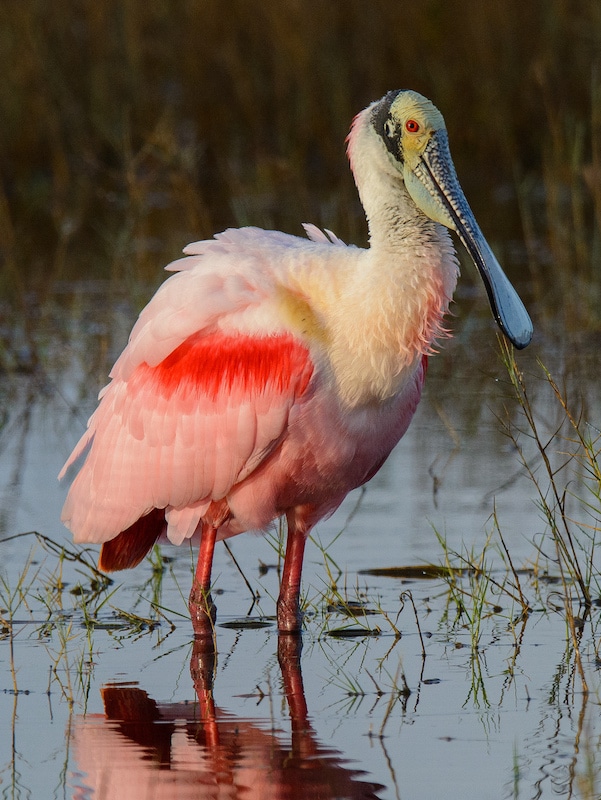
Roseate Spoonbill Platalea ajaja ©Dylan Vasapolli
The USA in the world context
The entire USA (all 50 states) has 1176 bird species. The contiguous USA ‘Lower 48’ bird list stood at 993 species at the end of 2020, including 14 endemics and ten breeding endemics. Adding Alaska (which is huge: about the same surface area as Colombia or Peru!), adds another endemic, McKay’s Bunting Plectrophenax hyperboreus. Including Hawaii adds a further 59 endemics to the American list.
These are modest numbers compared to more tropical parts of the world, especially America’s neighbour – the ‘bird continent’ of South America. It may be unfair to compare the USA with the two most bird-rich countries in the world, but it is fun, so here goes: Colombia has 1993 bird species and 84 endemics, and Peru has 1890 species, 113 of them being endemic! Clearly, the USA has relatively low species and endemics numbers, but the quality of some of America’s iconic birds compensates for this.
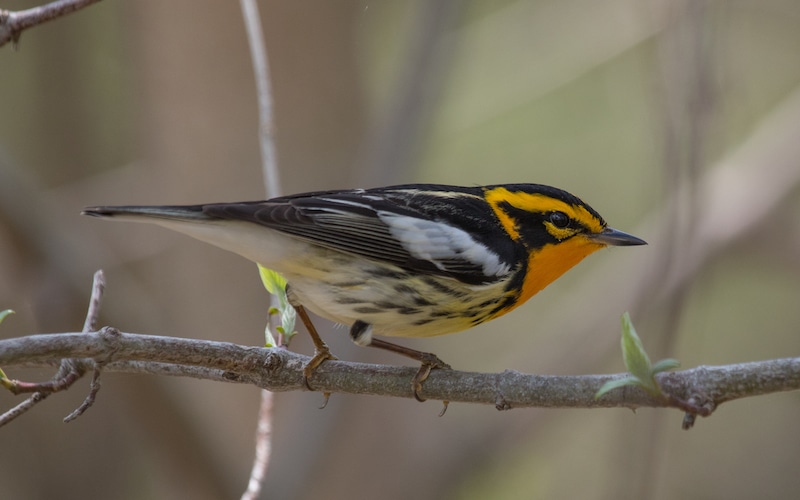
Blackburnian Warbler Setophaga fusca ©Dom Rollinson
Why bird the United States? Firstly, America boasts some of the world’s most beautiful and iconic birds. The American wood-warblers (Parulidae) are nothing short of spectacular. The bright colours (especially in freshly moulted spring plumage just before they commence breeding) and dazzling markings of these jewel-like birds are matched only by the sheer variety of completely different ones. It’s like being in a packed full aviary of beautiful birds when one birds the spring migration hotspots of the USA. While these New World warblers are distributed throughout North, Central and South America and the Caribbean, the USA has by far the Lion’s share of species. One of the very best places to see the largest number of them all at once is from the famous Magee Marsh boardwalk near the shores of Lake Erie, during spring migration each May. An incredible 37 species of these spectacular wood-warblers can be seen, given ten days or so in Ohio (preferably with a short foray into neighbouring Michigan in case you miss the rare Kirtland’s Warbler Setophaga kirtlandii during migration).
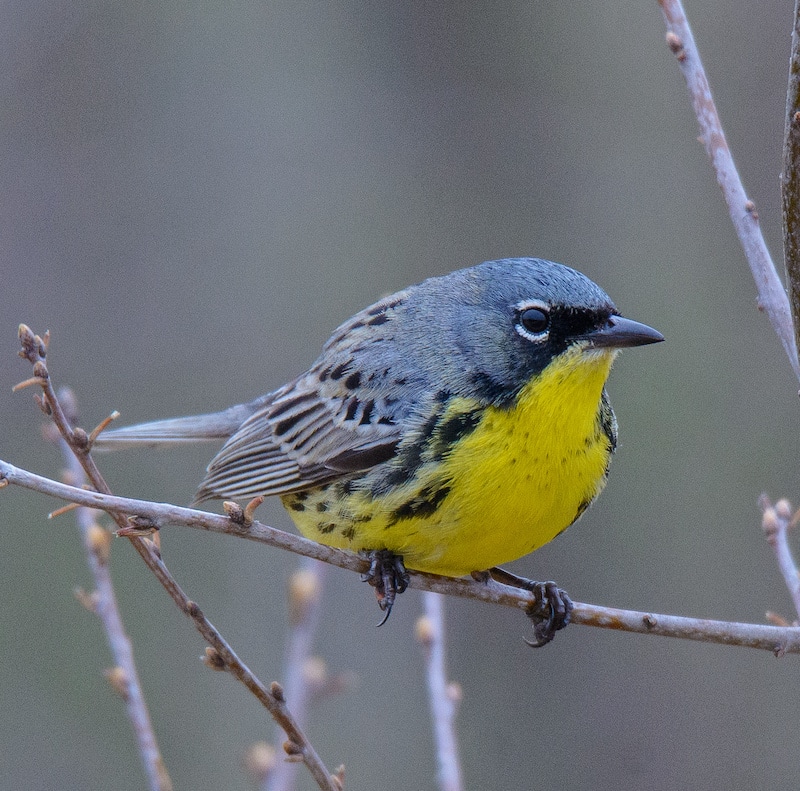
Kirtland’s Warbler etophaga kirtlandii ©Dylan Vasapolli
The equally famous Point Pelee in Canada is where the migrants first arrive after crossing Lake Erie from Ohio. Both the American and Canadian sides are spectacular, with eye level views of many species that are otherwise often high up in the canopy when breeding (rather than migrating). During frequent cold snaps during spring migration, when insects move to the ground, a dazzling array of brightly coloured wood-warblers feed below and at eye level, providing marvellous views and photo-opportunities.
The dazzling American wood-warblers are my number one reason for loving American birding. But the USA of course also boasts some of the world’s most iconic birds. Snowy Owl Bubo scandiacus irrupts into the Lower 48 (as well as across the great prairies of Canada) in remarkable numbers some years. In Ohio, Michigan, Minnesota and other northern states, Snowy Owl is a regular feature each winter. Minnesota and the Rocky Mountain states (e.g. Wyoming, Colorado and Idaho) are also excellent for Great Grey Owl Strix nebulosa, another of the planet’s most sought-after birds.
My favourite American bird is actually Tufted Puffin Fratercula cirrhata, which I personally find even more spectacular than Atlantic Puffin Fratercula arctica (which does of course also occur in America, with Acadia National Park and offshore islands in Maine being famous for it). The United States is remarkable for boasting not one but three species of puffin, and as a group, the Alcids (like the American wood-warblers) are remarkably diverse in the USA, most of them on the west coast. There are so many other wonderful species including the charismatic Marbled Murrelet Brachyramphus marmoratus which breeds at dizzying heights on mossy branches of old growth forest at sites including Redwood National Park in California.
The USA also boasts a plethora of ‘chicken-like birds’. First of all are the two prairie chicken species, both of which used to inhabit a large swathe of the Great Plains, but are now sadly rare and localised (just like the once prolific herds of Bison Bison bison and endless colonies of prairie dogs). Then there are all kinds of grouse including, among many others, the two Sage-Grouse species with their awesomely spectacular displays.
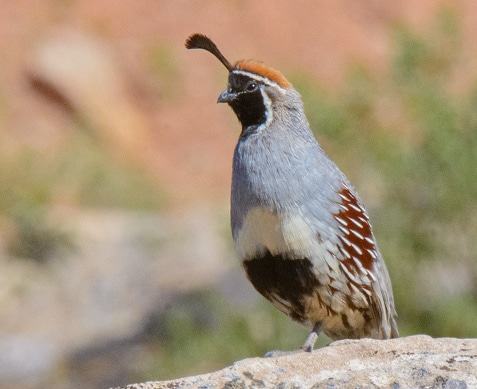
Gambel’s Quail Callipepla californica ©Dylan Vasapolli
The American quails are spectacularly plumed, sometimes with fancy head feathers, e.g. in Gambel’s Quail Callipepla californica and the elegant Mountain Quail Oreortyx pictus. Then are the three ptarmigans, only one of them in the Lower 48 though; White-tailed Ptarmigan Lagopus leucura (aka ‘Snow Quail’) occurs southwards through the Rocky Mountain states. Finally, the good old Wild Turkey Meleagris gallopavo has been widely re-introduced and can be seen with ease in many states.

Greater Roadrunner Geococcyx californianus ©Dylan Vasapolli
It would be remiss of me not to mention Greater Roadrunner Geococcyx californianus in my list of iconic ‘must see’ world birds that make it worth visiting the USA for (although seeing Lesser Roadrunner Geococcyx velox in Honduras was also a real highlight of my birding career to date!). And the same can be said of California Condor Gymnogyps californianus, a primeval monster that can be seen winging its way over the Grand Canyon or Big Sur coast of California.
Then there is always the lure of whether there could still be a couple of Ivory-billed Woodpeckers Campephilus principalis knocking around one of the spectacular southern cypress swamps of the USA. I’m sure not, sadly, but we can always dream!
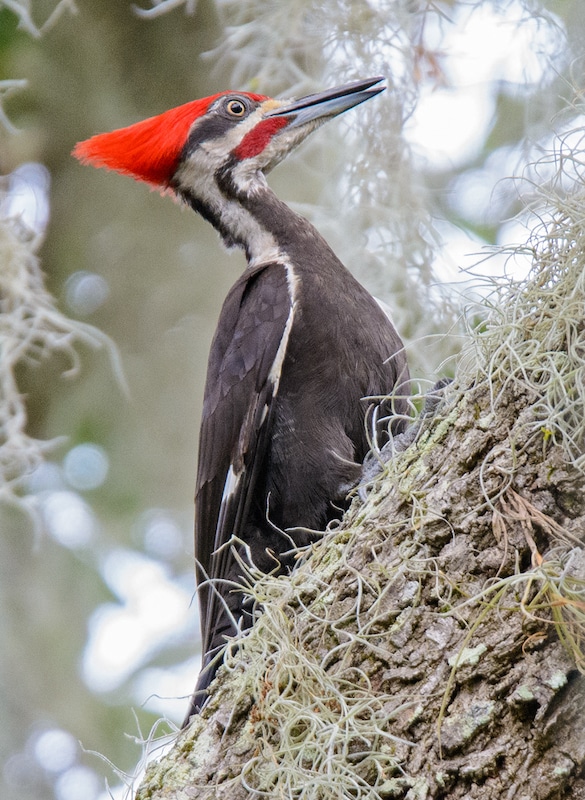
Pileated Woodpecker Dryocopus pileatus ©Dylan Vasapolli
Pileated Woodpecker Dryocopus pileatus provides some compensation though as it too is a spectacular bird, one of my favourite American species. In fact, the USA in general boasts more than its fair share of woodpeckers including some really beautiful ones, Red-headed Woodpecker Melanerpes erythrocephalus being one of the most popular of them all.
Last but not least, I always find it amusing how so many American birders are so blasé about some of the most beautiful birds in the world, just because they abound. The very first American bird I ever saw on that first jetlagged day I arrived in Wyoming, American Robin Turdus migratorius, is stunningly beautiful, as are all three bluebird species. American jays (also usually blue in colour) are also particularly good-looking, e.g. the abundant jay of the east, Blue Jay Cyanocitta cristata is wonderful (only it’s jarring call and sheer abundance make it unpopular with some locals). The bright red Northern Cardinal Cardinalis cardinalis does, unlike the jar, have a pleasant (albeit incessant) song, but many an American birder has become tired of this ‘all too common’ eastern bird. American birding friends love how I (as an alien) don’t take these birds (or the wonderful Raccoon Procyon lotor, Virginia Opossum Didelphis virginiana or other common mammals) for granted.
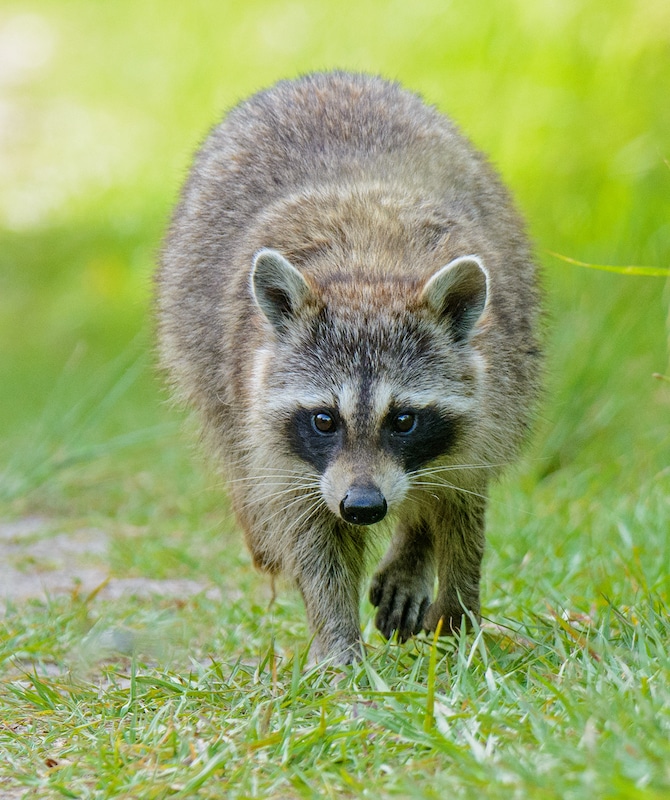
Raccoon Procyon lotor ©Dylan Vasapolli
Why is American birding so appealing (apart from the iconic birds mentioned above, of course)?
Birding the humongous United States really does give one a sense of freedom. Embarking on a great American road trip on the country’s vast network of interstates and highways will allow you to see a large variety of birds with ease. Some areas such as southern California and the East Coast are bustling with people and large cities, but during your travels you’ll also encounter some remarkably remote places. In Wyoming for example, Pronghorn Antelope Antilocapra americana outnumber people (the human population of this very large state is only half a million).
Being from Africa, I love megafauna, and during my 2.5 years in Wyoming I wasn’t bored from the large mammal point of view. Two species of bear, Wolf Canis lupus, Moose Alces americanus, Bison and then of course all the small mammals such as the various beautifully striped chipmunk species, were some of the non-birds that kept me amused and entertained while living in Wyoming.
America is, of course, famous for its national parks – places like Yellowstone, the Grand Tetons, Yosemite, Joshua Tree, the Grand Canyon, Bryce Canyon, Arches, the Everglades and just so many other natural wonders. The USA definitely boasts some of the world’s most spectacular scenery.
Which are the most important states to cover, to see the bulk of the species mentioned above?
If I had to pick the top ten states to kickstart your American birding career in, the following would be my list. Visiting these states would indeed give you a chance to see all the species mentioned above:
California – a huge state that takes forever to drive the length of. What’s not to love about its beautiful endemic Yellow-billed Magpie Picca nuttalli? A boat trip to Santa Cruz Island should bag you California’s other endemic, Island Scrub Jay Aphelocoma insularis. It’s also a great state to find the beautiful Steller’s Jay Cyanocitta stelleri in.
California boasts some famous pelagic departure points, such as San Diego and Monterrey Bay; these (and Westport, Washington state) are great for a wide variety of pelagic seabirds and Alcids.
California is a brilliant state for all kinds of important US birds such as Greater Roadrunner, California Condor, a host of woodpeckers including (as just one example) the unusual and breathtaking White-headed Woodpecker Picoides albolarvatus.
Arizona – what a magnificent state! Some of my best birding anywhere in the world was in the deserts and cooler, forested ‘sky islands’ of this bio-diverse and scenically spectacular state. Like Texas, many typically Mexican species cross the border here, e.g. Arizona Woodpecker Leuconotopicus arizonae, Elegant Trogon Trogon elegans, occasionally Eared Quetzal Euptilotis neoxenus and the dazzling Red-faced Warbler Cardellina rubrifrons, to pick just a handful.
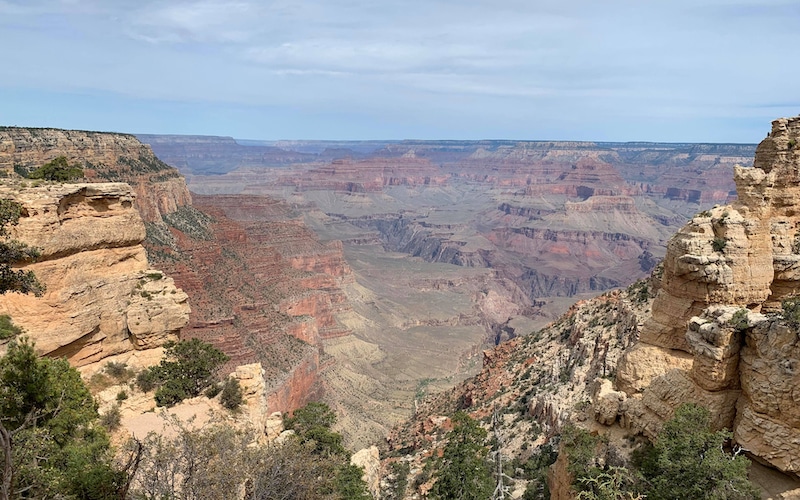
Grand Canyon ©Jacob Roalef
Texas – one of the most bird-diverse of all the states, great for accumulating a respectable American bird list. Roadrunner is easily seen in this massive state, but it is the more localized (for the US) species that most people visit Texas for, e.g. the two hill country specials, the Endangered Golden-cheeked Warbler Setophaga chrysoparia and the Near-threatened Black-capped Vireo Vireo atricapilla, along with all the Rio Grande specials such as the gaudy Green Jay Cyanocorax luxuosus and many others.
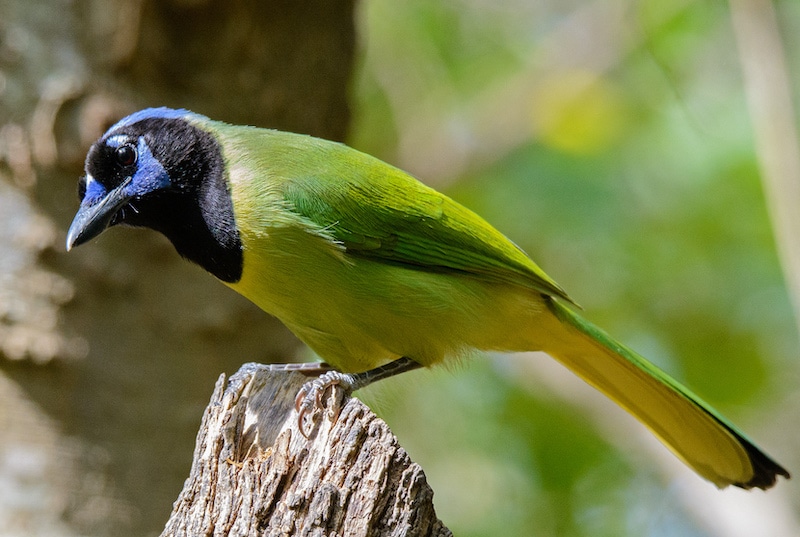
Green Jay Cyanocorax luxuosus ©Dylan Vasapolli
Colorado – this is the classic place to go for the chicken-like birds mentioned previously, as most of them occur here. Colorado is where the Great Plains meet the Rocky Mountains, and the ‘Front Range’ where these two spectacular geographic features meet, is a really magnificent part of the world to explore. Colorado is a great place to see prairie birds (not only the plains grouse, but also for example the scarce Mountain Plover Charadrius montanus and the charismatic Burrowing Owl Athene cunicularia), and Rocky Mountain species such as all three rosy-finch species, many Boreal Forest/Taiga species that extend their ranges far to the south along these impressive mountains, etc. Neighbouring Wyoming is also good for a number of these species, and boasts some of the most spectacular scenery in all of America, along with some of the country’s most famous icons, Old Faithfull being one of them.
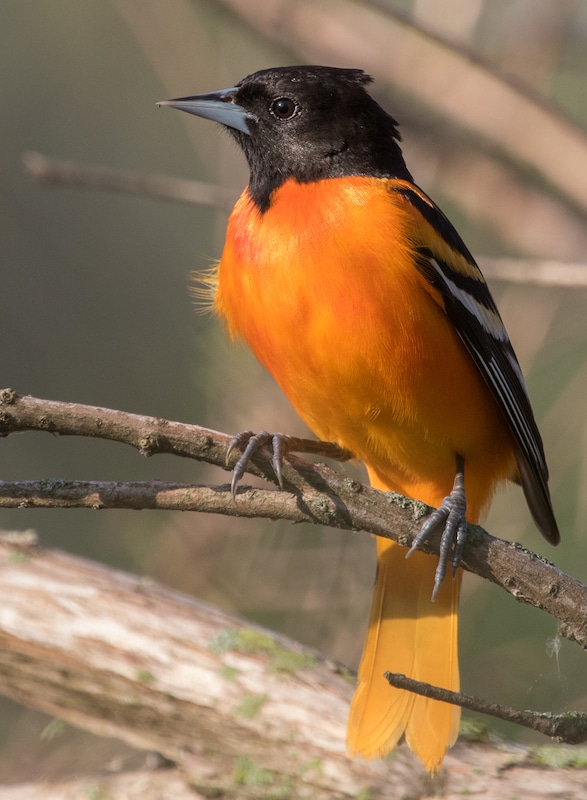
Baltimore Oriole Icterus galbula ©Dom Rollinson
Ohio – this is arguably the best state to see eastern warblers in, when they are in freshly-moulted spring plumage, more details within the text above and here. It’s not just about warblers though, other stunning birds like orioles, cuckoos, jays and so many others also migrate through here. Birding Ecotours has an office in Ohio largely because of its strategic location as a migrant hotspot. You can often get really close-up views of the beautifully marked, bizarre American Woodcock Scolopax minor during the spring migration in Ohio. The state is excellent for birding year-round, not just during migration (I’ll probably write more details about Ohio birding later, so watch this space).
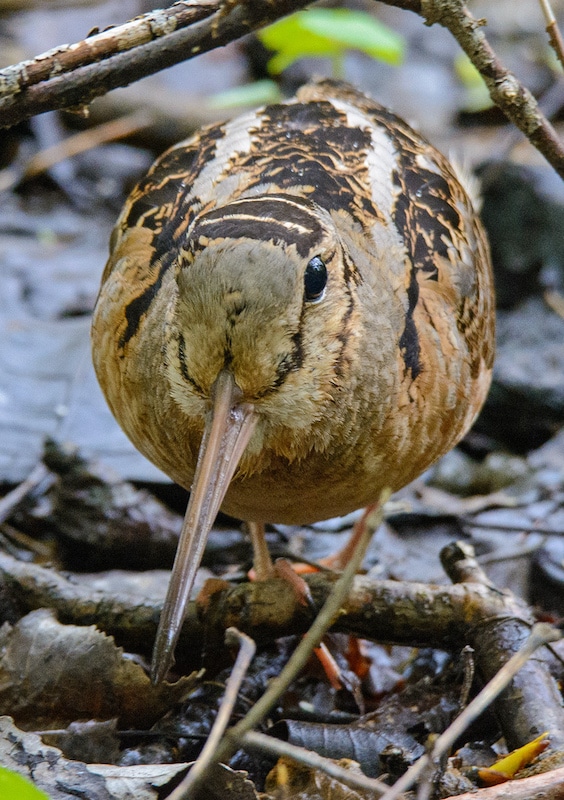
American Woodcock Scolopax minor ©Dylan Vasapolli
Florida – birding is exceptional along the Space Coast; the Kennedy Space Centre/Cape Canaveral is in fact surrounded by the Merritt Island Wildlife area which is full of birds, not just alligators. The rest of the Florida Peninsula, including the Everglades, the spectacular Florida Keys and the Dry Tortugas, is not to be missed. Florida is reminiscent of the Caribbean and indeed Key West is only 90 miles from Cuba.
Minnesota – braving a few January or February bitterly cold winter days between the harbour of Duluth on Lake Superior, and Sax-Zim Bog, usually allows one to find Snowy Owl, Great Grey Owl, Northern Hawk-Owl Surnia ulula, Boreal (Tenglmans’s) Owl Aegolius funereus, brilliant woodpeckers, winter finches and some of the Boreal grouse species.

Mountain Quail Oreortyx pictus ©Jacob Roalef
Maine – this is a famous state not only for Atlantic Puffin and many other seabirds including sea ducks, but also for Grey-cheeked Thrush Catharus minimus (although this species can be driven up to instead of hiked to, in neighbouring New Hampshire)
Alaska – America’s most incredible wilderness: spectacular scenery, amazing megafauna and many charismatic birds such as a staggering diversity of Alcids, not to mention northern owls.
Hawaii – many endemics, sadly quite a number of them already extinct.
More details (and photos, maps, trip reports, etc.) of United States birding, and of each specific state, are at the USA tour pages of Birding Ecotours.
